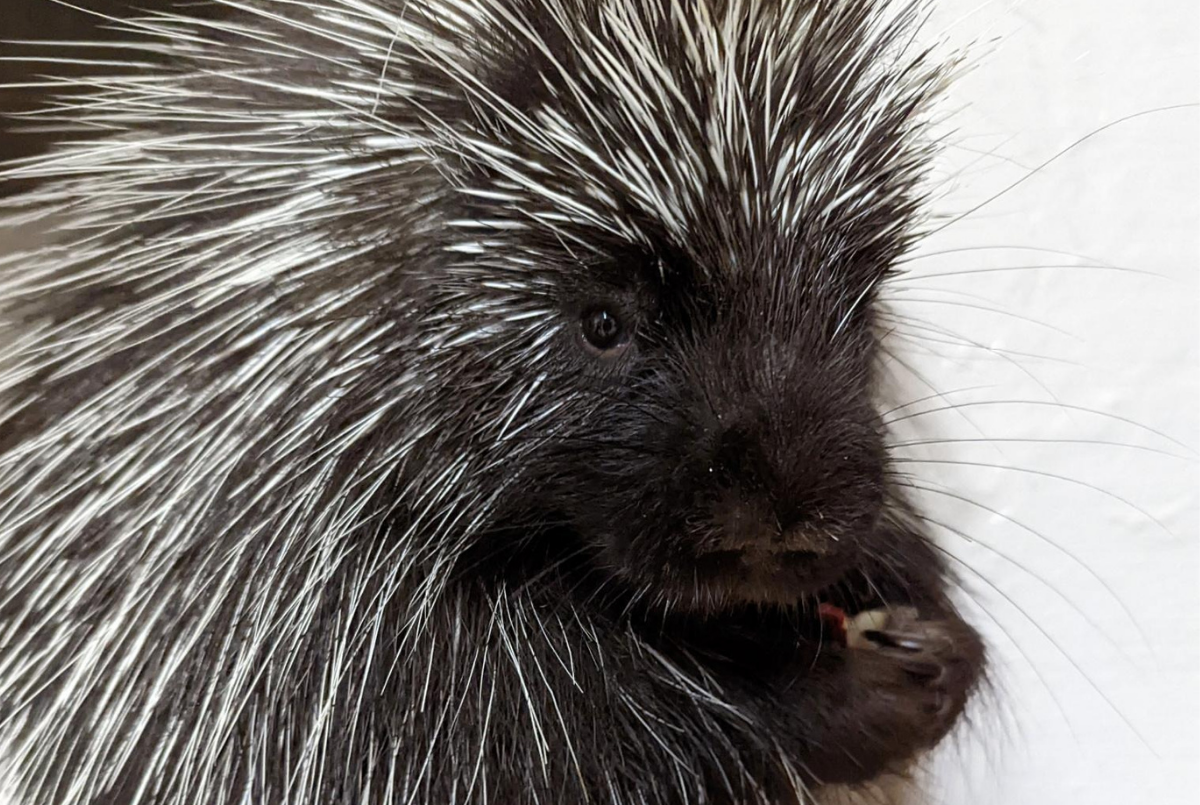North American Porcupine

Basic Information:
Scientific Name: Erethizon dorsatum
Habitat: North American porcupines can be found throughout forested areas across North America, but have also adapted to live within shrublands, tundra, and even deserts.
Diet: North American porcupines are strictly herbivores, eating a variety of leaves, grasses, fruits, and roots and tubers. In the winter they survive on wood, bark, and pine needles.
Size: 1 to 1.5 feet tall / 2 to 3 feet long
Weight: About 20 pounds
Lifespan: 7.1 years according to AZA Species Survival Statistics
Distribution Map:
I.U.C.N. Conservation Status:

What does this mean?
Least Concern – a species determined by the International Union for Conservation of Nature (I.U.C.N.) to be pervasive, abundant, and thriving.
Our North American Porcupines:
Prickles (Female) – Born May 15th, 2020
Vanny (Male)- Born May 5th, 2024
About North American Porcupines:
These solitary animals can be found waddling all across the forested regions of the North American continent looking to snack on tasty fruits, roots, and plants. Only 2nd to the beaver, the North American porcupine is one of the largest rodents on the continent. Named after the French word porcespin which translates to “thorn pig,” these animals are easily identified by the large number of quills on their back. These 30,000 prickly needles are one of a porcupine’s primary defense mechanisms. While they would prefer to just shimmy up a tree when threatened, that is not always a possibility. In these cases, the quills are utilized. Although they are unable to “shoot” their quills like the common misconception declares, when threatened they will turn their back to a predator and then walk backwards into their face. Each quill is covered in tiny barbs that then stick in their victim and are extremely difficult to remove without apposable thumbs. Because of this, many predators who attempt to enjoy a tasty porcupine end up getting quills stuck in them which then become infected. Many animals who suffer this fate eventually die themselves even if they are able to kill the porcupine first. So even though North American porcupines are slow, lumbering, and have poor eyesight, the threat of their protective quills can be plenty to deter a lot of hungry predators.
Did You Know?!
- Porcupines have the signature orange rodent teeth that never stop growing. Their teeth contain iron to aid in chewing and filing. This iron is what gives their teeth an orange tint.
- North American porcupines don’t hibernate! Instead, they hide themselves in a dark place such as a cave, a den, or a tree. This can protect them from predators.
- North American porcupines spend about 3/4ths their lives in trees! Their curved nails aid in climbing.
- North American porcupines are nocturnal meaning that they are mostly active at night!

